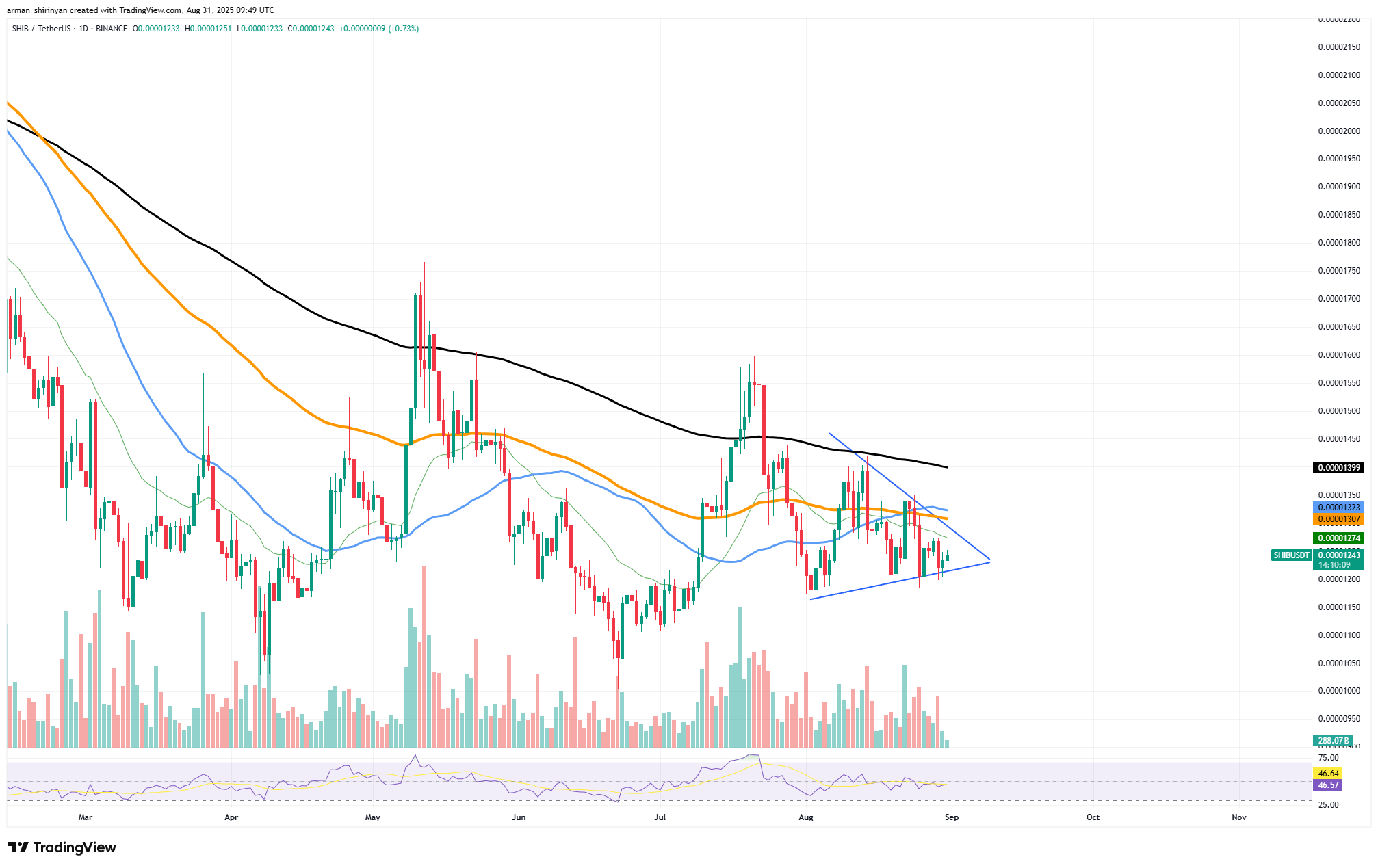Shiba Inu exchange reserves—an overwhelming 84 trillion SHIB held on exchanges—create persistent sell pressure that can cap rallies and increase crash risk. For now, high exchange balances mean SHIB remains vulnerable to market-maker dumps and retail panic until reserves meaningfully decline.
-
Constant SHIB pressure from 84 trillion tokens on exchanges increases downside risk.
-
High exchange balances are liquid and can trigger sudden supply dumps during rallies.
-
Technical pattern: descending triangle with decreasing volume suggests likely downward resolution unless reserves drop.
Shiba Inu exchange reserves: 84T SHIB on exchanges pressuring price—learn risk signals and next steps for traders. Read now.
What are Shiba Inu exchange reserves and why do they matter?
Shiba Inu exchange reserves are the amount of SHIB tokens held in exchange wallets and available for trading. Large exchange reserves mean supply can be released quickly, creating immediate downward pressure on price and limiting the upside during rallies.
How do SHIB exchange reserves affect price dynamics?
High exchange balances act as an overhang on SHIB price. Exchanges store roughly 84 trillion SHIB, which is liquid and tradable at any time. This concentration increases the likelihood of sell-offs from whales, market makers or coordinated liquidity events, and can prevent sustained breakouts above key resistance levels like the 200-day SMA.

SHIB/USDT Chart by TradingView
Technically, SHIB has been forming a descending triangle with decreasing volume. Such patterns often resolve downward when supply outweighs demand. Until exchange reserves decline—either through burns, transfers to cold storage, or long-term staking—price remains vulnerable to abrupt declines.
What hidden risks should SHIB holders watch for?
Primary risks include leveraged long positions and momentum-based retail buying that ignores structural supply. If exchange balances remain elevated, even modest selling can cascade through liquidations and stop runs, intensifying declines. Traders should monitor exchange balances as a leading indicator of market vulnerability.
How can investors monitor and respond to reserve trends?
Track exchange balance metrics, on-chain transfer volumes, and large wallet movements. A sustained decrease in exchange reserves suggests accumulation off-exchange and reduces immediate sell pressure. Conversely, spikes in exchange inflows signal potential impending dumps and warrant risk-reduction strategies.
Frequently Asked Questions
Question: Is a SHIB relief rally possible?
A relief rally is possible if SHIB breaks consolidation with high volume and exchange balances decline. However, any rally may be capped until a clear, sustained decrease in exchange-held SHIB is observed.
Question: What should traders do now?
Traders should limit leverage, monitor exchange reserves closely, and prefer scaled entries or hedges. Focus on clear decreases in exchange balances and strong volume confirmation before treating rallies as sustainable.
Key Takeaways
- Exchange reserves matter: 84T SHIB on exchanges creates a meaningful supply overhang.
- Technical and on-chain signals: Descending triangle, decreasing volume, and high inflows increase downside risk.
- Risk management: Reduce leverage, monitor reserve trends, and wait for volume-backed breakouts or reserve declines.
Conclusion
Shiba Inu exchange reserves are a central structural risk for SHIB price action. Until the 84 trillion SHIB on exchanges meaningfully declines, the token faces persistent sell pressure that can limit rallies and magnify drops. Investors should combine on-chain reserve monitoring with technical analysis and strict risk controls. COINOTAG will continue to track reserve trends and market signals for updates.
